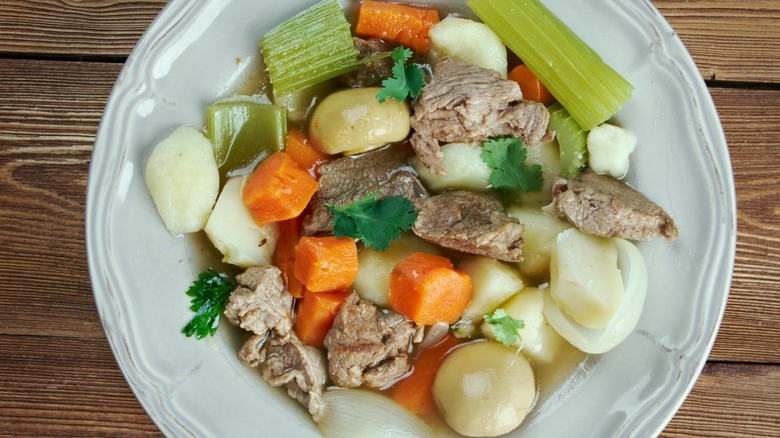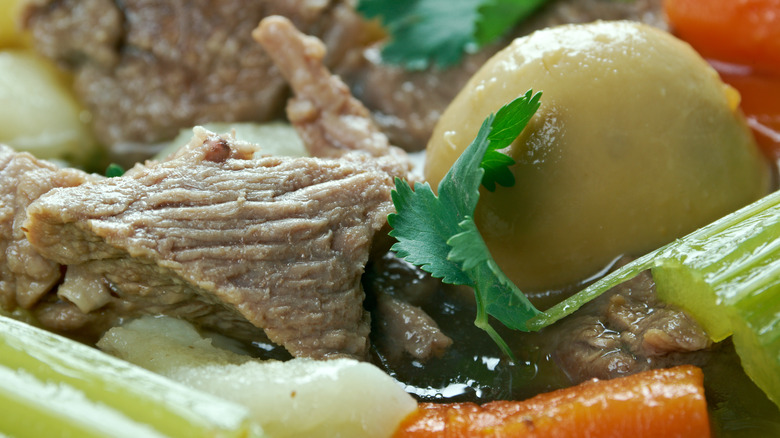Here's How Traditional Irish Skirts And Kidneys Were Invented
Irish soda bread, colcannon, shepherd's pie, corned beef and cabbage — besides being supreme comfort foods, these are all classic dishes from Ireland. Another delicacy, sometimes with a less clear-cut list of ingredients, is Irish stew. Lamb, mutton, beef, or pork can be used, and often, root vegetables like potatoes, parsnips, or rutabaga are included in a brothy base, says The Spruce Eats. Just like tomato sauce in Italy can vary from region to region and even family to family, Irish stew has many variations all across the country.
The specific ingredients in an Irish stew recipe are usually dictated by what is regionally available. What doesn't vary, though, is time. A lengthy simmering time is what makes Irish stew so rich and flavorful — and it was especially essential for tenderizing and drawing out the flavor of the cuts of meat included in an early version of the dish known as skirts and kidneys. Here's how the hearty stew was born.
The dish was made using unwanted pork cuts
Irish stew can mean various things in different parts of Ireland, but in the southern coastal towns of Cork and Waterford, the classic stew is known as skirts and kidneys, per MSN. This dish gets its memorable name from the inclusion of pork kidneys and skirts, which James Whelan Butchers defines as the "thin strips" of meat that run along the ribs and backbone of the pig. These are known to be tender since they come from muscles that don't get overworked.
In addition to these pork offcuts, a stew of skirts and kidneys usually also include potatoes, salt, white pepper, thyme, and corn flour for a thicker consistency, reports Taste Atlas. Why use these parts of the pig as opposed to other cuts? As MSN explains, these ingredients were easy to come by but unpopular in the towns of Cork and Waterford, which fed the British Army. After supplying the troops with "good" meat, residents had to be creative with the leftover offal, a practice known as nose-to-tail cooking. According to James Whelan, skirts and kidneys are delicious — they just need to be stewed for at least an hour for the best flavor.

